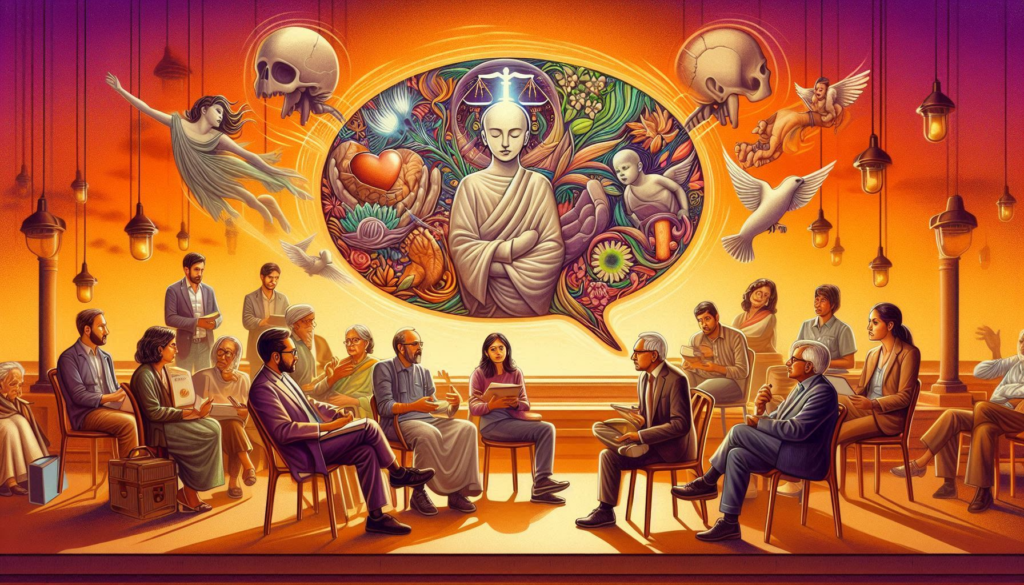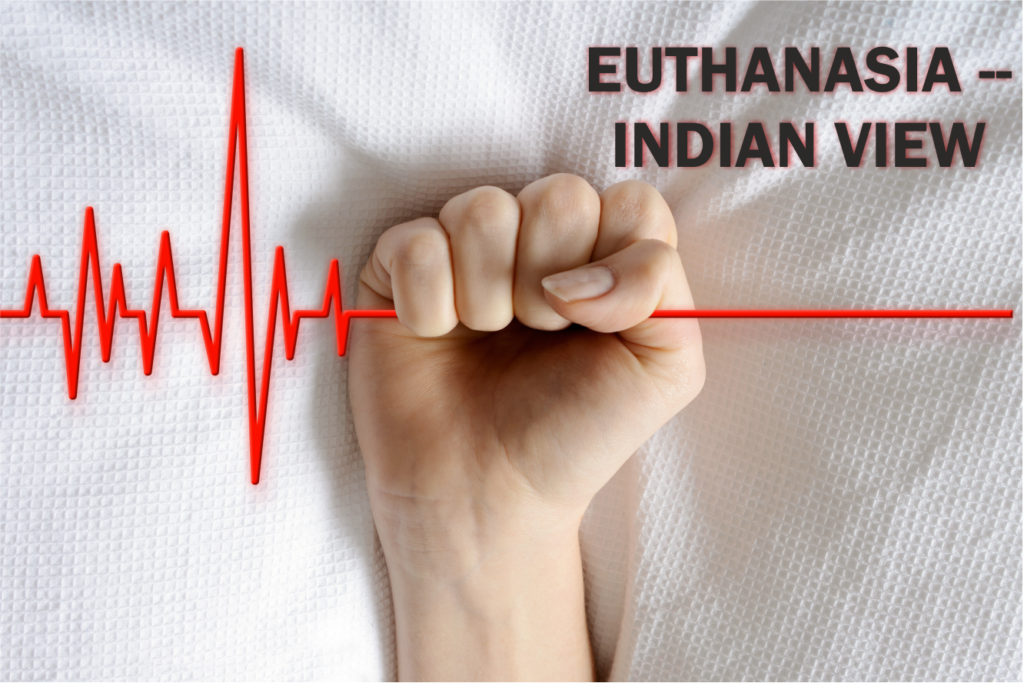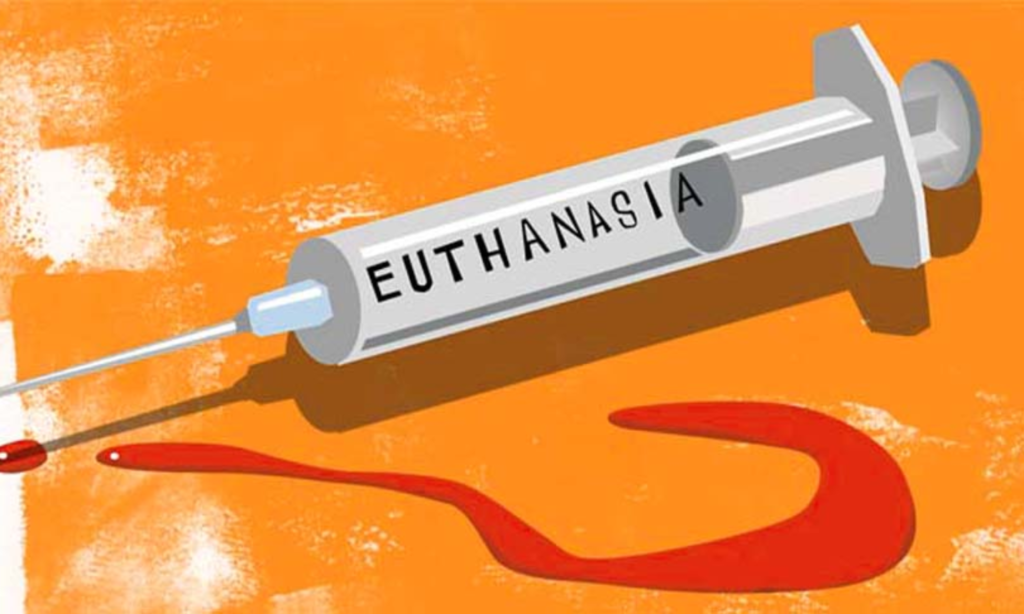
Abstract
The “right to die” is one of the most sensitive and ethically complex issues in medical law. It challenges the traditional understanding of the right to life and raises questions about autonomy, dignity, and the limits of medical intervention. In India, the debate on euthanasia on whether passive or active has evolved through landmark judicial pronouncements, philosophical arguments, and medical ethics. From the Gian Kaur v. State of Punjab1 decision, which rejected the right to die, to Common Cause v. Union of India2, which recognized the legality of passive euthanasia and living wills, Indian jurisprudence has gradually shifted towards respecting patient autonomy. This paper examines the legal and moral dimensions of euthanasia in India, the global approaches to assisted dying, and the continuing tension between the sanctity of life and the dignity of death. It argues that while India has made progressive legal strides, there remains a need for comprehensive legislation that balances compassion, ethical safeguards, and medical accountability.
Introduction
Medical law occupies the delicate space between life, death, and human choice. Among its most debated questions is whether individuals possess the right to end their lives with dignity when suffering becomes unbearable. The issue of euthanasia was derived from the Greek words “eu” (good) and “thanatos” (death) which refers to the act of ending a person’s life to relieve suffering from incurable illness or terminal pain.
In India, the conversation around euthanasia intersects with constitutional law, medical ethics, and human rights. Article 21 of the Indian Constitution guarantees the right to life and personal liberty, but does it implicitly include the right to die? For decades, this question has divided judges, scholars, and ethicists. The evolution from criminalizing suicide attempts to recognizing the legality of passive euthanasia marks a profound transformation in the Indian legal conscience.
This article traces the journey of the right to die in India, analyses global trends, and explores how medical ethics and law must reconcile compassion with caution in dealing with end-of- life decisions.
Understanding Euthanasia: Forms and Definitions
Euthanasia may be classified based on the nature and consent involved:
- Active Euthanasia – A deliberate act to end a person’s life, such as administering a lethal injection.
- Passive Euthanasia – Withholding or withdrawing medical treatment that prolongs life, such as turning off life support.
- Voluntary Euthanasia – Conducted with the patient’s consent.
- Non-voluntary Euthanasia – When consent cannot be obtained (e.g., patients in a vegetative state).
- Involuntary Euthanasia – Performed against the patient’s wishes (legally impermissible).
The Constitutional Framework: Right to Life and Dignity
Article 21 of the Constitution of India states:
“No person shall be deprived of his life or personal liberty except according to procedure established by law.”
The judiciary has interpreted this right expansively to include the right to live with dignity. But does dignity extend to the process of dying? Initially, courts answered this question in the negative.
In State of Maharashtra v. Maruti Shripati Dubal (1987)3, the Bombay High Court took a revolutionary step by holding that the right to life includes the right to die. However, this view was overturned by the Supreme Court in Gian Kaur v. State of Punjab (1996)4, which held that the right to life does not include the right to die, as life is a natural right, whereas death is its termination. Yet, the Court acknowledged that the right to die with dignity could be a component of the right to live with dignity, especially in cases of terminal illness or incurable conditions. This subtle distinction later became the foundation for the Aruna Shanbaug and Common Cause judgments

Judicial Evolution: From Aruna Shanbaug to Common Cause
The legal turning point came with Aruna Ramachandra Shanbaug v. Union of India (2011)5. Aruna Shanbaug, a nurse, had been in a permanent vegetative state for over 37 years after a brutal assault. The Supreme Court, while rejecting the plea for active euthanasia, recognized the possibility of passive euthanasia under strict judicial supervision. The Court laid down procedural guidelines requiring approval from a High Court before withdrawing life support.
This landmark judgment marked the beginning of judicial recognition that dignity in death is as significant as dignity in life.
Subsequently, in Common Cause v. Union of India (2018)6, a Constitution Bench expanded the scope of Article 21 by legalizing passive euthanasia and recognizing living wills, documents through which individuals can specify in advance that they do not wish to be kept alive by artificial means if they fall into an irreversible coma or vegetative state.
Chief Justice Dipak Misra observed:
“The right to die with dignity is an intrinsic facet of the right to life guaranteed under Article 21.” This judgment brought India in line with several progressive nations that recognize the importance of patient autonomy and end-of-life decision-making.
Euthanasia and the Indian Penal Code
Sections 306 and 309 of the Indian Penal Code, 1860 (IPC) play a crucial role in this debate.
- Section 306: Abetment of suicide is a criminal offence.
- Section 309: Attempt to commit suicide is punishable (though effectively decriminalized by the Mental Healthcare Act, 2017).
- While euthanasia technically involves an act leading to death, the courts have distinguished abetment of suicide from medically assisted death, recognizing that the latter arises from compassion, not malice. However, active euthanasia continues to fall within the ambit of Section 302 (murder) or Section 304 (culpable homicide not amounting to murder).
Ethical Dimensions of the Right to Die
The debate over euthanasia is not merely legal, it is deeply moral. Medical ethics, anchored in the Hippocratic Oath, traditionally prohibits doctors from ending life. Yet, when medical technology prolongs suffering rather than alleviating it, the question arises: does preserving biological life equate to preserving dignity?
The four fundamental principles of medical ethics, autonomy, beneficence, non-maleficence, and justice offer guidance:
- Autonomy supports a patient’s right to choose.
- Beneficence and non-maleficence require doctors to act in the patient’s best interest and avoid harm.
- Justice demands fair treatment and rational resource allocation.
Balancing these principles in end-of-life care requires compassion, transparency, and procedural safeguards to prevent abuse.
Global Perspectives: Comparative Analysis
The global legal landscape on euthanasia is diverse:
- Netherlands and Belgium: Recognize both active and passive euthanasia under strict regulatory frameworks.
- Switzerland: Allows assisted suicide if done without selfish motives.
- Canada (Carter v. Canada, 2015): Legalized medical assistance in dying (MAiD) for terminally ill adults.
- United Kingdom: Euthanasia remains illegal; only withdrawal of treatment is permitted (Airedale NHS Trust v. Bland, 1993).
- United States: Permits physician-assisted dying in states like Oregon, California, and Washington under “Death with Dignity Acts.”
India’s cautious recognition of passive euthanasia positions it between total prohibition and full legalization. The absence of comprehensive legislation, however, continues to create ambiguity in medical practice and enforcement.
Case Study The Aruna Shanbaug Story
Aruna Shanbaug’s case remains emblematic of the ethical and emotional complexity of euthanasia. A young nurse at Mumbai’s KEM Hospital, she was assaulted and left in a vegetative state in 1973. For 42 years, she was kept alive by nurses who cared for her selflessly. In 2011, journalist Pinki Virani filed a petition seeking permission for euthanasia, arguing that Aruna was being kept alive without dignity.
The Supreme Court rejected active euthanasia but permitted passive euthanasia under judicial oversight. The Court’s decision reflected a delicate balance between compassion and caution; it recognized Aruna’s suffering but also respected the devotion of those who cared for her.
The judgment ignited a nationwide dialogue about the meaning of dignity, compassion, and the limits of state control over personal life and death.

The Mental Healthcare Act, 2017: A Shift in Legal Attitude
The Mental Healthcare Act, 2017 decriminalized attempted suicide by stating that a person attempting suicide “shall be presumed to have severe stress” and shall not be punished. This marked a significant shift in state attitude from criminalization to compassion.
By removing punishment for attempted suicide, the Act acknowledged mental suffering as a health issue, not a crime. This reform indirectly strengthened arguments for recognizing the right to die with dignity in terminal or irreversible medical conditions.
Arguments For and Against Legalizing Euthanasia
In Favour:
- Autonomy: Every individual has the right to make decisions about their own body.
- Dignity: Forcing someone to endure unbearable pain violates human dignity.
- Medical Resource Ethics: Allowing a peaceful death can free resources for others who can recover.
- Compassion: Euthanasia prevents unnecessary suffering and promotes humane medicine.
Against:
- Sanctity of Life: Human life is sacred and cannot be deliberately terminated.
- Potential for Abuse: Legalizing euthanasia could lead to coercion or exploitation of vulnerable patients.
- Slippery Slope: What begins as voluntary euthanasia may expand into involuntary cases.
- Medical Ethics: Doctors’ role is to heal, not to harm.
Need for Comprehensive Legislation
India’s current euthanasia framework is based solely on judicial guidelines. Without a statutory law, implementation remains inconsistent. A comprehensive Euthanasia (Regulation and Safeguards) Act is required to:
- Define conditions for eligibility.
- Establish review boards at national and state levels.
- Mandate psychological evaluation and medical opinions.
- Ensure oversight to prevent misuse.
Such a law would offer clarity to both patients and doctors, ensuring that mercy is not mistaken for malice.
Conclusion
The evolution of the right to die in India reflects the judiciary’s effort to harmonize compassion with constitutional morality. From Gian Kaur to Common Cause, the Indian Supreme Court has moved from absolute prohibition to cautious recognition. Yet, the absence of dedicated legislation leaves practical gaps that risk inconsistency and confusion.
Death, like life, deserves dignity. A humane legal system must not merely preserve existence, it must protect the right to choose peace over prolonged suffering. The right to die with dignity is not about ending life; it is about ending pain with respect. The next step for India is clear: translate judicial recognition into a compassionate, ethical, and enforceable legal framework.
References
- Gian Kaur v. State of Punjab, (1996) 2 SCC 648.
- Aruna Ramachandra Shanbaug v. Union of India, (2011) 4 SCC 454.
- Common Cause v. Union of India, (2018) 5 SCC 1.
- State of Maharashtra v. Maruti Shripati Dubal, 1987 Cri LJ 743 (Bom).
- Kusum Sharma v. Batra Hospital, (2010) 3 SCC 480.
- Airedale NHS Trust v. Bland [1993] AC 789 (UK).
- Carter v. Canada (Attorney General), 2015 SCC 5 (Canada).
- Mental Healthcare Act, 2017 (India).
- R. N. Sahay, Right to Die with Dignity: Legal and Ethical Perspectives in India, Journal of Indian Law and Society, Vol. 12 (2023).
- R. Dhavan, Constitutional Morality and the Right to Die: A Humanistic View, Indian Journal of Constitutional Studies, 2022.
- M. Nair, Euthanasia and Human Rights: The Indian Experience, Economic and Political Weekly, Vol. 58 (2021).
- World Medical Association, Declaration on Euthanasia, adopted at the 39th World Medical Assembly, Madrid, Spain, 1987.
- Indian Penal Code, 1860 (Sections 302, 304, 306, and 309).
- P. Virani, Aruna’s Story, Zubaan Books, 2014.
- Law Commission of India, Report No. 241: Passive Euthanasia – A Relook, August 2012.
Footnotes
- Gian Kaur v. State of Punjab, (1996) 2 S.C.C. 648 (India). ↩︎
- Common Cause v. Union of India, ,(2018) 5 S.C.C. 1 (India). ↩︎
- State of Maharashtra v. Maruti Shripati Dubal, 1987 Cri. L.J. 743 (Bom.) (India). ↩︎
- Gian Kaur v. State of Punjab, (1996) 2 S.C.C. 648 (India). ↩︎
- Aruna Ramachandra Shanbaug v. Union of India, (2011) 4 S.C.C. 454 (India). ↩︎
- Common Cause v. Union of India, ,(2018) 5 S.C.C. 1 (India). ↩︎





